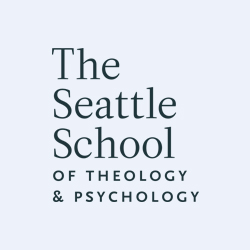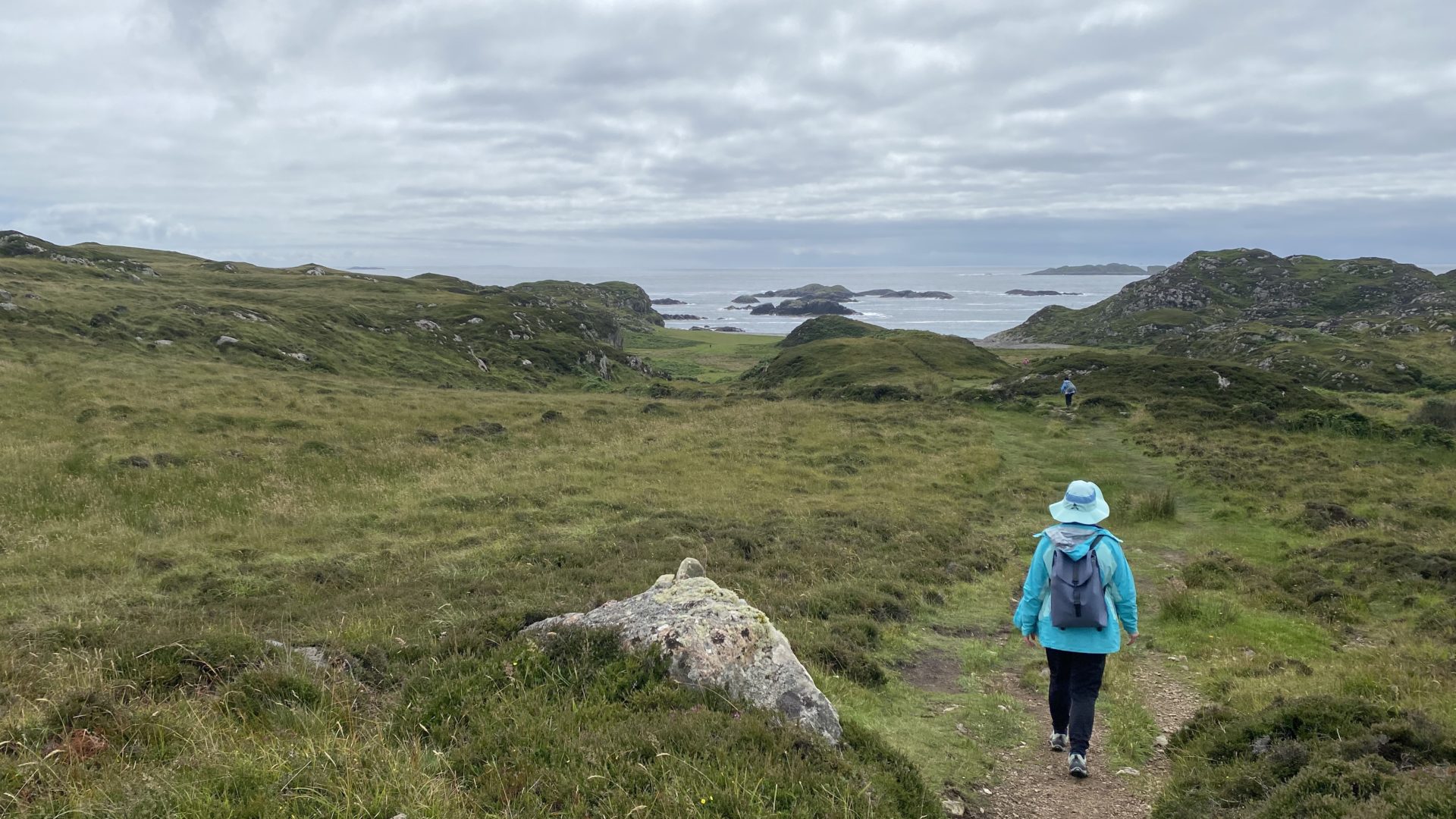This is something truly spectacular about relationships—that we can make something together that we wouldn’t have made on our own. -Sarah Steinke MACP ’19
Curious about alumni partnerships, Jocelyn Skillman, as Supervisor of Alumni Outreach, recently had the opportunity to interview Mary DeJong, MATC ‘17 and Sarah Steinke, MACP ‘19. Together these two alumni bring their training, gifts, and strengths – Mary as an eco theologian and spiritual ecologist and Sarah as a psychotherapist, yoga instructor, and poet – to their collaborative work, as they guide pilgrimages to Iona, Scotland, where travelers and seekers explore the rich heritage of Celtic spirituality and sacred rewilding practices, synching the body and the soul in this journey.
How long have you known each other? How did you get/stay connected?
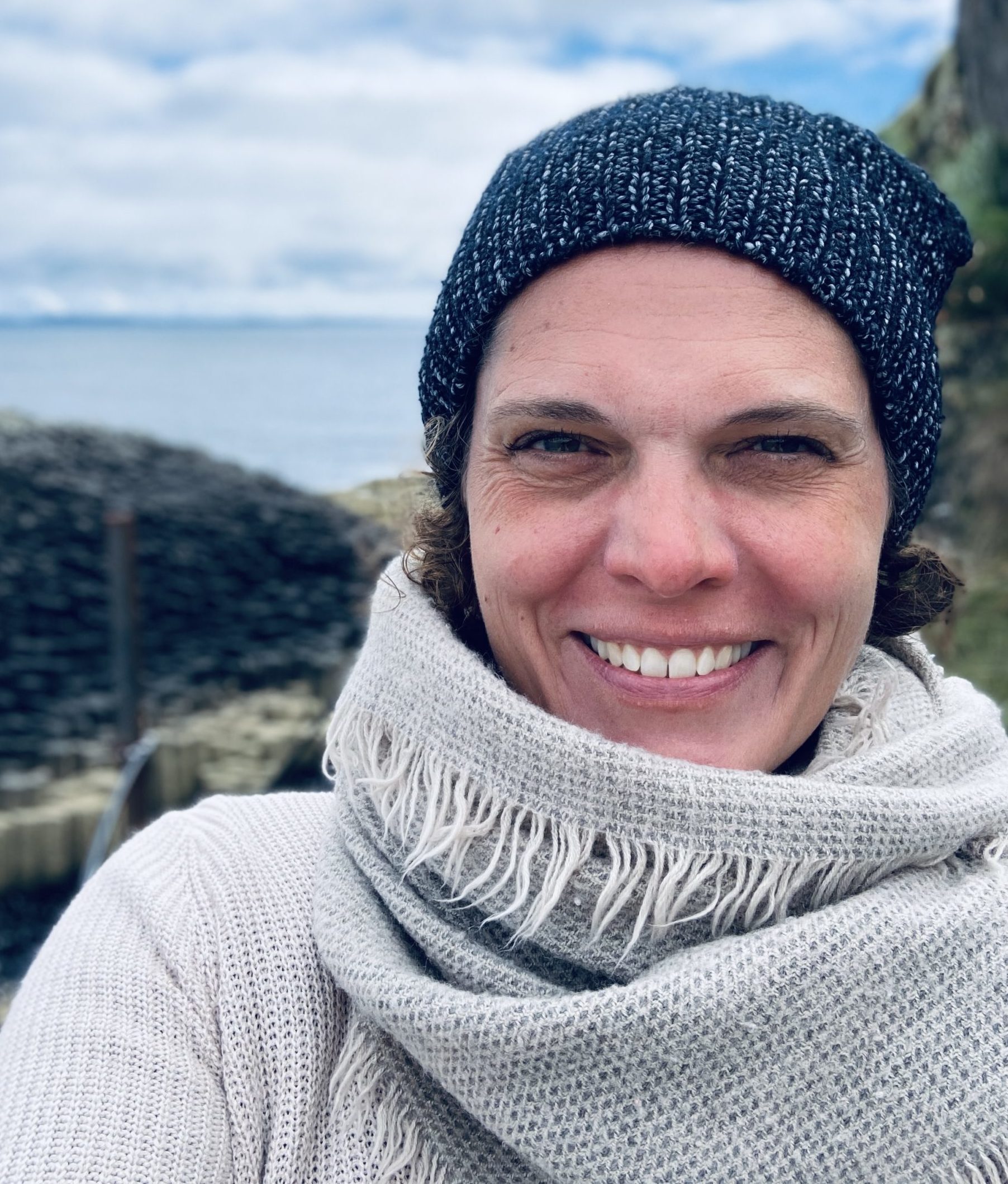 Sarah Steinke (SS): The first time I remember meeting Mary was at her graduation party, which I was attending with my husband. It was our final stop before heading home, and I remember being tired and ready to call it a day. But when I stepped into Mary’s backyard, I felt a big sigh move through my body—this place was one of restoration and peace, and provocation, as here was a woman who was awake in ways I didn’t often encounter. Mary and I have been connected ever since. Our souls connect across the water from each other—she being in Seattle, and me in Bremerton—and our bodies meet in Iona.
Sarah Steinke (SS): The first time I remember meeting Mary was at her graduation party, which I was attending with my husband. It was our final stop before heading home, and I remember being tired and ready to call it a day. But when I stepped into Mary’s backyard, I felt a big sigh move through my body—this place was one of restoration and peace, and provocation, as here was a woman who was awake in ways I didn’t often encounter. Mary and I have been connected ever since. Our souls connect across the water from each other—she being in Seattle, and me in Bremerton—and our bodies meet in Iona.
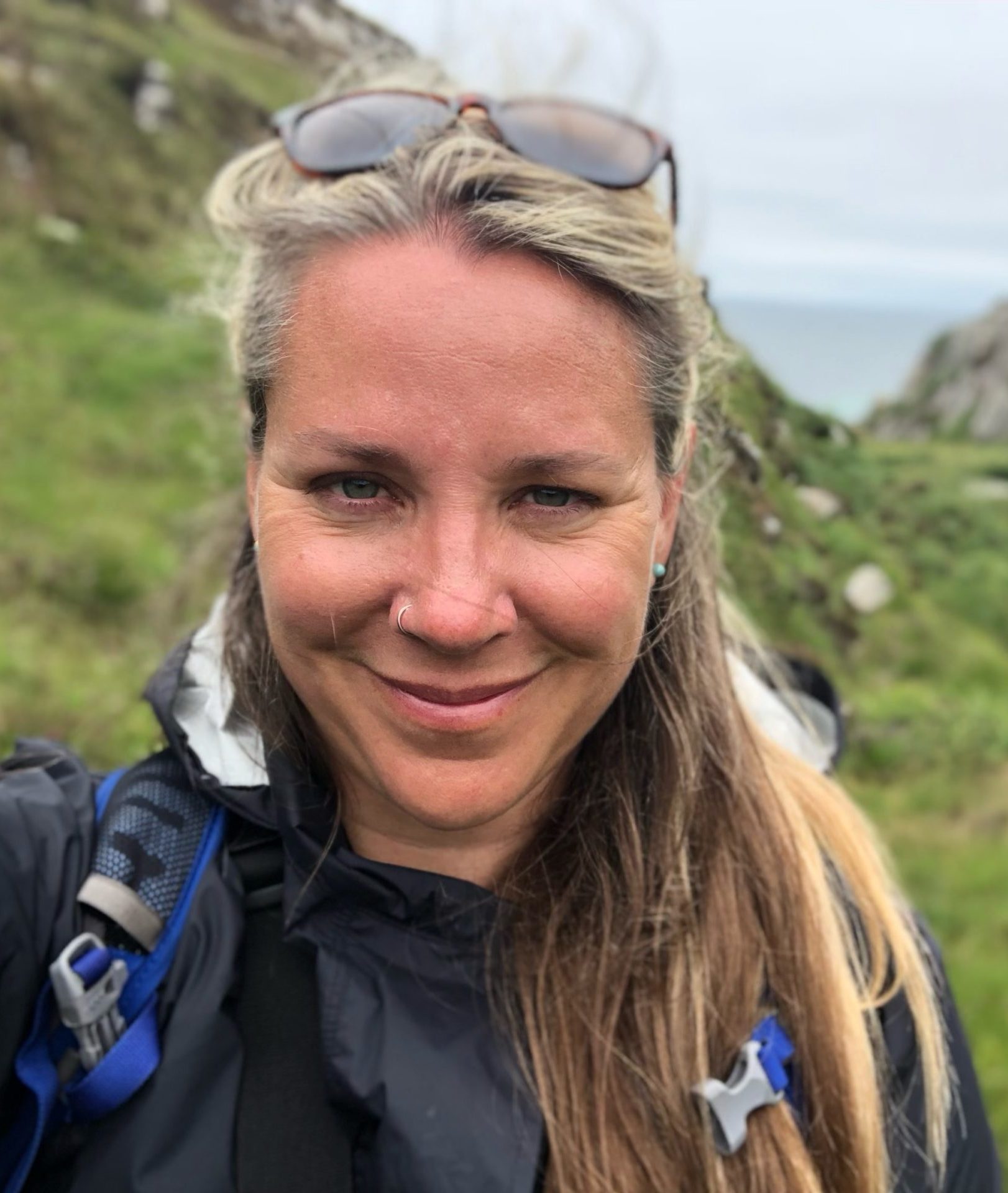 Mary DeJong (MD): My first time encountering Sarah was at our class’ (S)end event. She was leading a yoga session for soon-to-be graduates. She radiated grounded calm and centered peace. I was captivated! I had already been guiding pilgrimages to Iona for some time, and had been imagining a movement component to complement the journey. Encountering Sarah enlivened this imagination as the way she held the space and offered guidance through the practice resonated with the hope I held. Sarah and my friendship has deepened over the years of co-guiding pilgrimages to Iona. The nature of our lives here in the Pacific Northwest doesn’t support us seeing one another very often; but when we meet on Iona, it is as if time and distance folds on itself and our friendship picks up where we left off, sending exponentially deeper taproots into the relational terrain we now hold between us.
Mary DeJong (MD): My first time encountering Sarah was at our class’ (S)end event. She was leading a yoga session for soon-to-be graduates. She radiated grounded calm and centered peace. I was captivated! I had already been guiding pilgrimages to Iona for some time, and had been imagining a movement component to complement the journey. Encountering Sarah enlivened this imagination as the way she held the space and offered guidance through the practice resonated with the hope I held. Sarah and my friendship has deepened over the years of co-guiding pilgrimages to Iona. The nature of our lives here in the Pacific Northwest doesn’t support us seeing one another very often; but when we meet on Iona, it is as if time and distance folds on itself and our friendship picks up where we left off, sending exponentially deeper taproots into the relational terrain we now hold between us.
Please tell us more about your Pilgrimages to Iona! What do you offer? What do you hope to share and gift?
SS: Mary has cultivated a soul journey that includes not only the bright goodness of adventure, but also shadow work, where we encounter the deep, dark underbelly we’ve forgotten is ours. On this pilgrimage, as we walk the earth’s body, we also walk the land of our bodies. Through pilgrimage in our bodies, we come to know our internal land, encountering the places we haven’t breathed into in some time, the places we’ve forgotten or maybe are afraid to enter, and we begin to rewild, and reconnect to our innate wholeness. All the while, we’re held by the earth’s heartbeat, and her breath of tide.
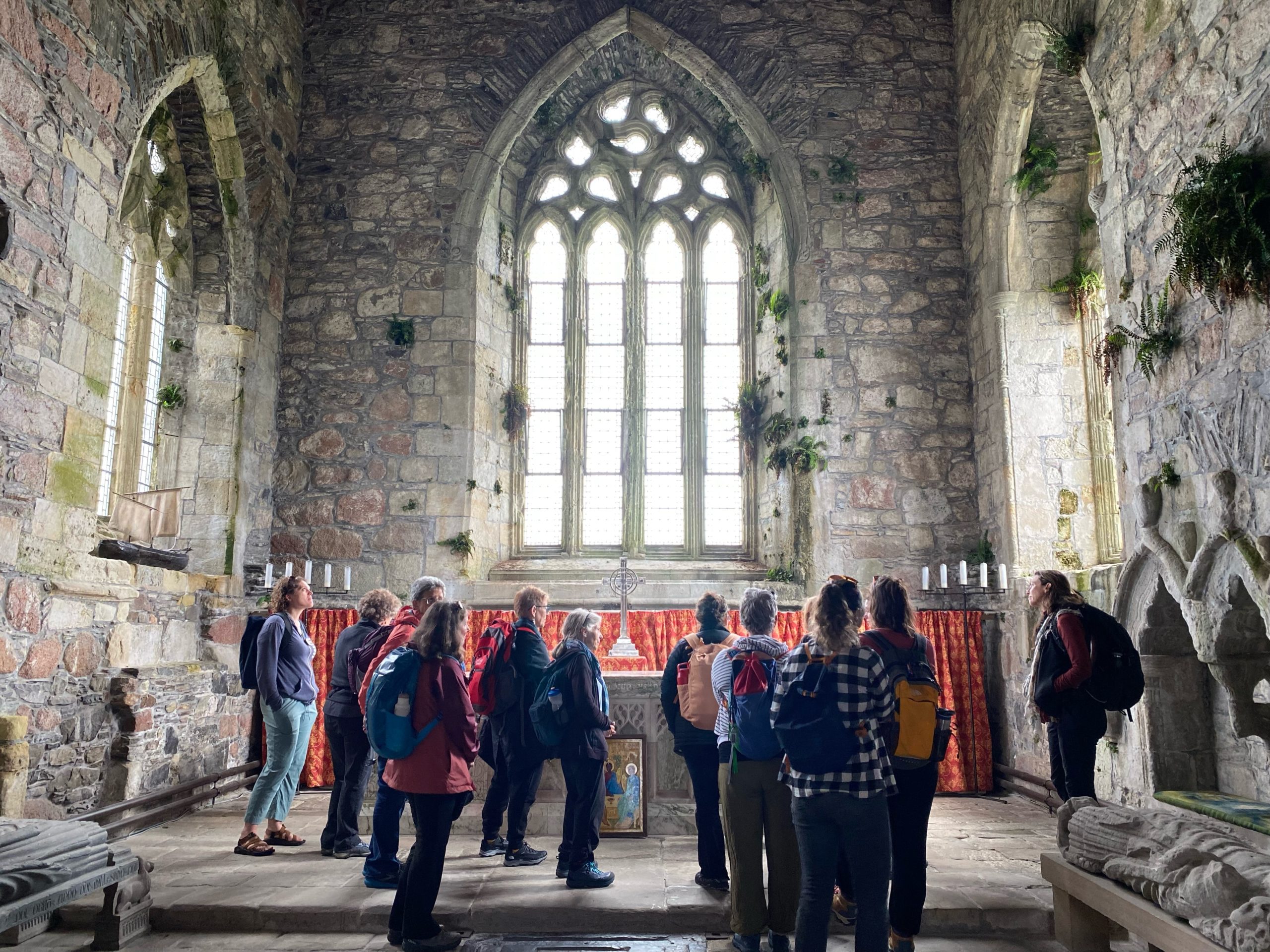 MD: The Iona Pilgrimage aims to provide a contemporary way to experience the archetypal stages of a transformational journey to an ancient holy site, and in particular, a journey that will re-awaken and reconnect participants to the reality of a sacred living Earth. Iona is singular in its role within the Christian church: it is considered to be the birthplace of Celtic Christianity, a stream of spirituality that integrated the Christian mission with the Celtic imagination of divine animism.
MD: The Iona Pilgrimage aims to provide a contemporary way to experience the archetypal stages of a transformational journey to an ancient holy site, and in particular, a journey that will re-awaken and reconnect participants to the reality of a sacred living Earth. Iona is singular in its role within the Christian church: it is considered to be the birthplace of Celtic Christianity, a stream of spirituality that integrated the Christian mission with the Celtic imagination of divine animism.
The Waymarkers Iona Pilgrimage provides programmatic support in re-engaging a Celtic worldview, which resonates deeply with the more modern expressions of spiritual ecology and eco theology. Every aspect of our programming is influenced by the underlying theme of sacred interrelationship.
How did this Iona Pilgrimage vision come about? Have the contours of it changed over time?
SS: While the contours of this pilgrimage have been shaped by Mary with her teachers and the community of Iona, my collaboration with her is ever-changing, as together we lean into spontaneity and play. This is something truly spectacular about relationships—that we can make something together that we wouldn’t have made on our own.
MD: I actually started taking groups to Iona in 2004 as part of a vocational discernment program I was asked to run for Seattle Pacific University. As I folded the program into my own Waymarkers work, I enhanced this offering to explicitly move one through the archetypal stages of the pilgrimage journey within a Celtic spirituality context to support a journey of sacred eco-awakening. In 2018 Sarah began to offer the yoga component, which was an integral part of the emergence of this program. Synching the body and the soul are paramount to a journey of transformation.
What’s your favorite part(s) about your pilgrimages? Any special memories/images you’d want to share with alumni?
SS: My favorite part of pilgrimage is coming to the end of my planning, and to the end of me. Iona is a place of wilderness, where plans and contingencies are thwarted, and where the invitation is to simply be. Though Spirit is ever present, Her great lap is the North Beach.
MD: My favorite moment is the calm confidence that Spirit has guided all the efforts to create the space on Iona for precious souls to show up and do such beautiful and challenging work. It is bearing witness to the unfolding, the remembering, and the reconnecting.
How has your understanding of God, community, Love deepened or changed? How has your own spirituality been informed, formed, evolved through these pilgrimages?
SS: My understanding of God has changed as I’ve allowed myself to be known, by fellow pilgrims, by Mary, the land, by the rocks and water, by my Self, by God. The journey is always different, but each time I walk away with blessing that I couldn’t have imagined had I not stepped into the stream of Life’s unfolding.
MD: I was raised within the church, and quite simply, I would say that these pilgrimages to Iona have reminded me that the Holy One is awaiting our gaze and our adoring presence outside of church walls and can be encountered through the watching eye of a puffin, through the blasting wind, through the clarifying turquoise waters of the sea and the dolphins who play within them.
Are there any academic/formational touchstones from your graduate education that continue to inform your work now?
SS: One of the gifts I’ve been given from The Seattle School is the way, albeit clumsy at times, this community seeks to live out encounter, invitation, embrace, recognizing the sovereignty of one another. I was given a robust relational education in a courageous place that didn’t always get it right but that wanted to make it right.
MD: My graduate and postgraduate work has been steeped in the intersection of ecology and religion, as well as cultural expressions of myth and deep story. The Seattle School taught me the importance of knowing our stories and how they interrelate. This includes knowing the stories of our soul, the soil, and the Sacred!


